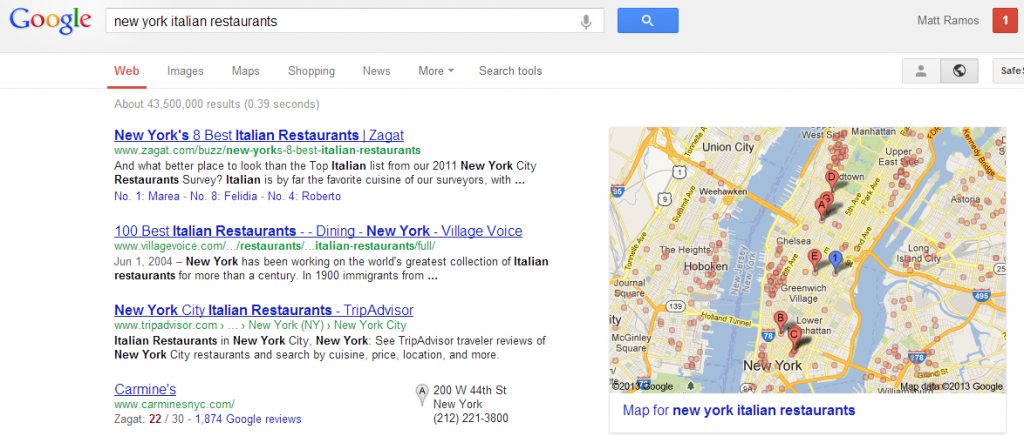
Why YouTube?
YouTube started in 2005 and one year later was bought by Google for $1.65 million. Google is the largest search engine and YouTube (though a video-based website) is the second largest search engine. YouTube has reached over 4 billion video views per day.
With recent changes in Google’s search algorithms, Google is starting to add more diverse media in search results. Google will also incorporate location-based results in YouTube search and Google searches. This will undoubtedly help SEO practices that incorporated YouTube for their brand.
YouTube videos are easily shared across many platforms from Facebook, Twitter, embedded on websites, and blogs. YouTube videos often appear in organic web search results (non-ads). Google has changed how they determine official pages and will provide more accurate identification of official pages.
How to use YouTube for SEO?
Set up an account creating a username, profile photo, description, website, etc. Make sure all of these appropriately reflect your brand and what you are trying to accomplish wi th that YouTube account.
th that YouTube account.
Change your channel to reflect your website with a background image, similar layout colors, and text color.
When you create a video you need to optimize your keywords, description, links, and title your videos. This is because search engine spiders cannot read videos.
Location will be factored more heavily in Google searches, so list it in your tags or geo-tag the video.
In your description, it’s helpful to place the URL to your website at the beginning. Include the whole url, including “http://”, so it’s a clickable link. This will show underneath the video and many users will click your link, navigating to your website instead of some other random Youtube video.
After you have optimized your videos it’s time to drive traffic to your videos. Embed videos on your website, Facebook, Twitter, blog, or other avenues where relevant and appropriate. On each page that embeds a video, add a hyperlink to your its page on Youtube – hopefully increasing the video’s rank in Youtube search results. Make sure your videos are public and allow them to be shared.
Integrate with the other social media channels and embedded YouTube player to automatically generate video rather than manually spreading the content. Make sure to allow your video to be viewed on mobile devices.
Much like other social media it’s good to subscribe to like-minded channels that can align with your brand. If your channel wants to be a one-stop-shop for related content, you should “favorite” other videos. This will put your favorite videos on your channel and provides your subscribers valuable information that leads to more traffic on your channel. One way to piggy back off related videos is to post a video reply. If the user allows it, your video shows up partway down the page, above the comments section. If you get enough traffic, Google AdSense is available for original content videos – but I wouldn’t normally recommend this if you’re monetizing the videos in some other way.
Increase your Online Marketing exposure in 2012 with the above tips and contact us if you need assistance.
Image credits go to Stuart Miles from freedigitalphotos.net



One thought on “Integrate YouTube with Your SEO Efforts”